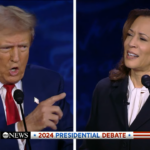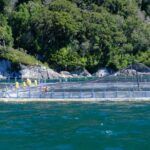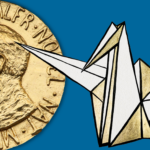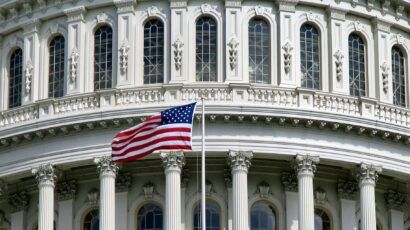Are new US export controls rules on chips and other critical tech good enough?
By Ian J. Stewart | September 13, 2024
 The United States Department of Commerce's new export control rules add quantum computing, advanced additive manufacturing equipment, and certain advanced semiconductor manufacturing equipment to its list. Photo by Mark Meng via Flickr/CC-BY-NC-ND
The United States Department of Commerce's new export control rules add quantum computing, advanced additive manufacturing equipment, and certain advanced semiconductor manufacturing equipment to its list. Photo by Mark Meng via Flickr/CC-BY-NC-ND
Last week, the United States rolled out new export controls on critical technologies, including semiconductor and quantum computing items, in an effort to bolster national security and for “foreign policy reasons.” Released by the Department of Commerce, these rules add quantum computing, advanced additive manufacturing equipment, and certain advanced semiconductor manufacturing equipment to its control list.
In recent years, the United States, along with several other countries, has taken transformative coordinated national action instead of agreeing to controls through multilateral export control regimes. While the reasons for these actions differ, collectively, they point to a need to rethink how export controls are coordinated at the international level, particularly the need to control emerging technologies. The existing multilateral export control regimes do not, alone, provide a sufficient basis for addressing today’s security challenges, especially with China’s full-society effort to weaponize emerging technology, which is known as Military Civil Fusion. While the existing regimes should be maintained, now is the time to work through the future of multilateral export controls to provide a mechanism for coordinating emerging technology controls internationally.
Shifting threat landscape. Given the distinct challenges posed by China and Russia—where China is seeking to weaponize advanced emerging technology and Russia is seeking to beg, borrow, and steal crude weapons, parts, and components to maintain its war machine—one might expect swift action from multilateral export control regimes to add emerging technologies to their control lists. However, the reality is far more complex. Since the end of the Cold War, export controls have primarily focused on the so-called rogue states, such as North Korea and Iran, and non-state actors.
There are four main international export control regimes: the Nuclear Suppliers Group (NSG) focused on nuclear proliferation issues; the Missile Technology Control Regime focused on missile and air system issues; the Australia Group focused on chemical and biological weapons; and the Wassenaar Arrangement, which is effectively a catchall regime for advanced military technology and everything else. Each of these mechanisms is country agnostic. That is, it is not a sanctions regime that targets specific countries—its control list and guidance apply to all countries equally. As such, none of these regimes directly address the contemporary Russia or China proliferation challenges. Russia is a member of all the regimes other than the Australia Group, whereas China is a member of only the Nuclear Suppliers Group.
The challenges posed by China and Russia are fundamentally different both from each other and from what export controls have focused on in recent decades. China is a technologically advanced near-peer to the United States. It seeks to indigenize advanced technologies for military and strategic purposes, including through its Military-Civil Fusion program. China acquires technology through various means: buying foreign companies, hiring foreign experts, purchasing manufacturing equipment, engaging in cyber espionage, and collaborating with universities abroad. In contrast, Russia is technologically stagnant, relying on illicit methods to acquire components and parts for its unsophisticated munitions, primarily used in Ukraine. Russia sources these through unscrupulous businesses, predominantly in China.
Stalled multilateral regimes. Russia has not been suspended from the multilateral export control regimes, as it has from other major international forums such as the Financial Action Task Force, the main international standard setting body for “tackl[ing] money laundering, terrorist and proliferation financing.” However, Russia has stalled progress in the export control regimes, preventing updates to the Wassenaar Arrangement since 2022. Because of Russia’s action, for two full Wassenaar Arrangement cycles in 2023 and 2024, the regime has not been able to agree to any significant additions to its control list. This means that proposals to add technologies including quantum computers and metal additive manufacturing equipment did not move forward. Russia’s participation in multilateral export control regimes has therefore become a significant obstacle. By preventing consensus on updates, Russia effectively protects itself from broader sanctions on emerging technologies, while frustrating efforts to contain China’s technological rise.
Russia is anyway subject to broad sanctions by most other participants in the export control regimes. This means that the lack of progress in the international control regimes is less impactful in relation to Russia than it otherwise could be. (All technologies are effectively restricted to Russia even though they have not been added to the export control regime lists.) But the more important broader point is that the regime is less well positioned to address the China challenge. Like the other regimes, the Wassenaar Arrangement is country agnostic. Nonetheless, for technologies like quantum computing, the principal reason for adding the technology to the control list now is to help manage technology transfer between advanced Western countries and China. More than this, if the Wassenaar Arrangement was functioning well, it would likely be the forum for coordinating the control of other advanced technologies, such as small feature size semiconductor manufacture and advanced compute. Instead, action on these topics has been taken on a national basis.
National action in the absence of coordination. There has been significant national action on export controls in recent years. Perhaps the most important actions were taken by the United States, alongside the Netherlands and Japan, to implement sweeping unilateral export controls on semiconductor manufacturing technology. These controls are aimed at China and seek to reshape global semiconductor supply chains to prevent China from manufacturing cutting-edge semiconductors for military purposes. Additionally, these controls limit China’s ability to import advanced computer processors. Given the central role of semiconductors in technology and the global economy, the impact of these measures is profound. They are likely to reshape the entire semiconductor supply chain and perhaps initiate the bifurcation of all supply chains to isolate China from the rest of the global economy.
These national semiconductor controls are only the most visible of a broader set of measures being implemented in response to the China challenge. Other measures include foreign direct investment controls, outbound investment restrictions, tightening technology controls in universities (under the guise of research security), and enhanced cybersecurity standards. Notably, these measures are not limited to the United States—key allies in Europe and Asia are adopting similar economic security policies.
Most recently, numerous countries, including the United States, have adopted controls on quantum computers and additive manufacture technology—the technologies that were discussed at the Wassenaar Arrangement in the 2022 and 2023 cycle. In the absence of consensus to add these technologies to the Wassenaar Arrangement control lists as a result of Russia’s opposition, the other countries simply decided to go ahead and control these technologies on a national basis in what has become known as the consensus minus one approach. This approach presents challenges, however, as many countries lack the legal basis to adopt national controls independently, and it is unclear how states will coordinate implementation without a multilateral forum.
The future of multilateral export controls. The current dynamics lead to the question of the future of the multilateral export control regimes. It seems certain that there will be continued efforts to better control transfers of advanced emerging technologies to China. Separately, it’s clear that Russia will continue its illicit procurement for its war in Ukraine. As things stand, the existing multilateral export control regimes are not positioned to help with either challenge, not least because Russia would block initiatives intended to address either issue.
This points strongly to the need for reform in the multilateral export controls or a new regime or coordination mechanism. To date, there has been hesitance about taking such steps lest it undermine the existing regimes. There is after all value in maintaining the existing regimes as a place for dialogue, even if they cannot address all contemporary challenges. Nonetheless, with no end to the Ukraine conflict in sight and clear coordination challenges in export controls emerging, now is the time to work through the future of the multilateral export control regimes. No clear view has emerged about what the outcome should be. In my opinion, since there is value in maintaining the existing regimes, a new additional multilateral coordination mechanism holds the most promise.
The challenge for export control practitioners is that there is so much political focus and urgency in addressing contemporary issues that finding the time and energy to rework international export control governance will be a challenge. Nonetheless, given current global security challenges, now is the time for action.
Together, we make the world safer.
The Bulletin elevates expert voices above the noise. But as an independent nonprofit organization, our operations depend on the support of readers like you. Help us continue to deliver quality journalism that holds leaders accountable. Your support of our work at any level is important. In return, we promise our coverage will be understandable, influential, vigilant, solution-oriented, and fair-minded. Together we can make a difference.
Keywords: critical technologies, emerging tech, export control, quantum computing
Topics: Analysis















